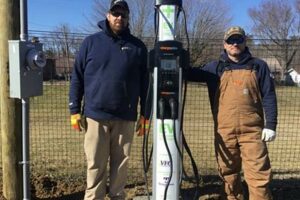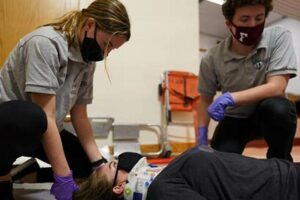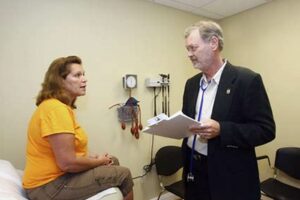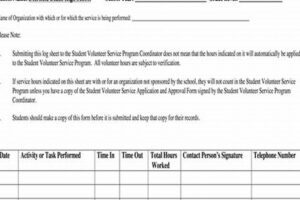Table of Contents
In the field of geomapping, the contributions of GIS Volunteers often go unnoticed despite their invaluable impact. These dedicated individuals leverage their expertise to create and maintain Geographic Information Systems (GIS) that form the foundation of many digital maps and applications we rely on today.
GIS volunteers come from diverse educational and professional background. United by a shared passion for geography and the desire to make a difference, they dedicate their time and skills to mapping projects that benefit communities worldwide. Their contributions span a wide range of areas, including disaster response, environmental protection, urban planning, and historical research, among others.
GIS Volunteer
Driven by passion, making a difference through maps.
- Mapping for a better world.
- Diverse skills, united by a common goal.
- Creating accessible geospatial data.
- Empowering communities with map knowledge.
- Supporting disaster response and recovery.
- Protecting the environment with spatial insights.
- Shaping urban planning with geographic data.
- Unveiling historical narratives through maps.
- Enabling scientific research with geospatial analysis.
- Fostering collaboration and open data sharing.
GIS volunteers: The unsung heroes of the digital mapping revolution.
Mapping for a better world.
In the realm of GIS, volunteers are driven by a profound desire to make a positive impact on the world through the power of maps. They recognize that maps are not merely visual representations of geographic features; they are tools that can empower communities, inform decision-making, and drive positive change.
GIS volunteers contribute to a wide range of mapping projects that address pressing global challenges. They map disaster-prone areas to aid in preparedness and response efforts. They map environmental resources to support conservation and sustainability initiatives. They map urban areas to improve infrastructure, transportation, and access to services. They map historical sites to preserve cultural heritage and promote tourism. And they map countless other features and phenomena that contribute to a better understanding of our planet and its people.
The work of GIS volunteers is particularly valuable in underserved and under-resourced communities. These communities often lack the capacity to create and maintain their own GIS data, leaving them without the geospatial information they need to address local challenges and plan for the future. GIS volunteers step in to fill this gap, providing these communities with the maps and data they need to improve their lives.
Furthermore, GIS volunteers play a crucial role in promoting open data and data sharing. They often make their maps and data freely available online, allowing others to use and build upon their work. This collaborative approach fosters innovation and ensures that geospatial data is accessible to all, regardless of their resources or location.
Diverse skills, united by a common goal.
GIS volunteers come from a wide range of backgrounds and professions, bringing a diverse set of skills and expertise to the field of geomapping. This diversity is one of the greatest strengths of the GIS volunteer community, as it allows for a wide range of perspectives and approaches to mapping.
- Cartographers and GIS Specialists: These volunteers have formal training and experience in cartography and GIS. They contribute their expertise in map design, data analysis, and geospatial modeling.
- Subject Matter Experts: GIS volunteers also include experts in various fields, such as environmental science, urban planning, public health, and history. They bring their specialized knowledge to bear on mapping projects, ensuring that the maps created are accurate, relevant, and useful.
- Data Collectors: Some GIS volunteers focus on collecting geospatial data. They may use GPS devices, drones, or other tools to gather data on the ground. This data is then used to create and update maps.
- Community Mappers: Community mappers are volunteers who work with their local communities to create maps that address local needs and issues. They may map community assets, hazards, or other features that are important to the community.
Despite their diverse backgrounds and skills, GIS volunteers are united by a common goal: to use their knowledge and expertise to make a difference in the world through mapping. They work together to create maps that are accurate, accessible, and useful for a wide range of purposes.
Creating accessible geospatial data.
One of the most important contributions of GIS volunteers is the creation of accessible geospatial data. Geospatial data is information about the Earth’s surface, such as the location of roads, buildings, land use, and natural features. This data is essential for a wide range of applications, including disaster response, environmental planning, urban development, and scientific research.
Unfortunately, geospatial data is often expensive and difficult to obtain. This is especially true in developing countries and underserved communities, where resources for data collection and mapping are limited. GIS volunteers help to bridge this gap by creating and sharing geospatial data that is freely available to all.
GIS volunteers use a variety of methods to create accessible geospatial data. They may use GPS devices to collect data on the ground. They may also digitize existing maps and data. Increasingly, GIS volunteers are using open source software and online platforms to create and share geospatial data. These platforms make it easy for volunteers to collaborate on mapping projects and to share their data with others.
The creation of accessible geospatial data by GIS volunteers is a vital contribution to the field of geomapping. This data is used by a wide range of organizations and individuals to make informed decisions about the world around us. By making geospatial data accessible to all, GIS volunteers are helping to create a more equitable and sustainable world.
Empowering communities with map knowledge.
GIS volunteers play a vital role in empowering communities with map knowledge. They work with community members to create maps that reflect the community’s needs and priorities. These maps can be used for a variety of purposes, including:
- Disaster preparedness and response: Community maps can be used to identify vulnerable areas and evacuation routes. They can also be used to track the spread of disasters and to coordinate relief efforts.
- Environmental planning: Community maps can be used to identify and protect sensitive environmental areas. They can also be used to plan for sustainable development.
- Urban development: Community maps can be used to plan for new infrastructure and services. They can also be used to improve access to education, healthcare, and other essential services.
- Cultural preservation: Community maps can be used to document and preserve cultural heritage. They can also be used to promote tourism and economic development.
By providing communities with map knowledge, GIS volunteers help to empower them to take control of their own development. Maps can help communities to identify problems, plan for the future, and advocate for their needs. In this way, GIS volunteers are helping to create more resilient and sustainable communities.
One example of how GIS volunteers are empowering communities with map knowledge is the work of the OpenStreetMap (OSM) community. OSM is a collaborative project to create a free and open map of the world. OSM volunteers use GPS devices and other tools to collect data on the ground. They then share this data with the OSM community, where it is used to create and update maps. OSM maps are used by a wide range of organizations and individuals, including governments, businesses, and humanitarian organizations. By contributing to OSM, GIS volunteers are helping to empower communities around the world with map knowledge.
Supporting disaster response and recovery.
GIS volunteers play a critical role in supporting disaster response and recovery efforts. They use their skills and expertise to create maps that can help emergency responders and relief organizations to:
- Identify and assess damage: GIS volunteers can use satellite imagery and other data to quickly identify and assess the extent of damage caused by a disaster. This information can be used to prioritize response efforts and to target aid to the areas that need it most.
- Map evacuation routes and shelters: GIS volunteers can create maps that show evacuation routes and the location of shelters. This information can help people to stay safe and to find shelter during a disaster.
- Track the spread of disease: GIS volunteers can use maps to track the spread of disease outbreaks. This information can be used to help public health officials to identify areas at risk and to take steps to prevent the spread of disease.
- Coordinate relief efforts: GIS volunteers can create maps that show the location of relief supplies and the areas that need assistance. This information can help relief organizations to coordinate their efforts and to ensure that aid is delivered to the people who need it most.
The work of GIS volunteers is essential for supporting disaster response and recovery efforts. Their maps help emergency responders and relief organizations to save lives and to provide aid to those who need it most. One example of how GIS volunteers are supporting disaster response and recovery is the work of the Red Cross and Red Crescent Movement.
Protecting the environment with spatial insights.
GIS volunteers use their skills and expertise to create maps and other geospatial data that can help us to protect the environment. These maps can be used to:
- Identify and protect sensitive environmental areas: GIS volunteers can use maps to identify and protect sensitive environmental areas, such as wetlands, forests, and wildlife habitats. This information can be used to create conservation plans and to prevent development in these areas.
- Track and monitor pollution: GIS volunteers can use maps to track and monitor pollution from sources such as factories, farms, and vehicles. This information can be used to identify pollution hotspots and to take steps to reduce pollution.
- Plan for sustainable development: GIS volunteers can create maps that show the location of natural resources, such as water, forests, and minerals. This information can be used to plan for sustainable development that minimizes the impact on the environment.
- Raise awareness about environmental issues: GIS volunteers can create maps and other visual representations of environmental data that can be used to raise awareness about environmental issues and to advocate for policies that protect the environment.
The work of GIS volunteers is essential for protecting the environment. Their maps and data help us to understand the complex interactions between humans and the environment. This information can be used to make informed decisions about how to protect the environment and to ensure a sustainable future for all.
Shaping urban planning with geographic data.
GIS volunteers play a vital role in shaping urban planning by providing geographic data and analysis that can help planners to make informed decisions about how to develop and manage cities.
- Mapping land use and zoning: GIS volunteers can create maps that show the location of different land uses, such as residential, commercial, and industrial areas. This information can be used to create zoning maps that regulate how land can be used.
- Identifying and planning for transportation needs: GIS volunteers can create maps that show the location of roads, highways, and public transportation routes. This information can be used to identify areas that need new or improved transportation infrastructure.
- Planning for parks and green spaces: GIS volunteers can create maps that show the location of parks, green spaces, and other recreational areas. This information can be used to plan for new parks and green spaces and to improve access to these areas for all residents.
- Addressing environmental concerns: GIS volunteers can create maps that show the location of sensitive environmental areas, such as wetlands and forests. This information can be used to avoid development in these areas and to protect them from pollution.
The work of GIS volunteers is essential for shaping urban planning. Their maps and data help planners to understand the complex needs of cities and to make informed decisions about how to develop and manage them in a sustainable way.
Unveiling historical narratives through maps.
GIS volunteers are also using their skills and expertise to unveil historical narratives through maps. They are creating maps that show the location of historical sites, events, and migration patterns. This information can be used to:
- Preserve cultural heritage: GIS volunteers can create maps that show the location of historical sites and landmarks. This information can be used to protect these sites from development and to promote tourism.
- Educate the public about history: GIS volunteers can create maps that tell the story of historical events. These maps can be used in schools, museums, and other educational settings to help people learn about the past.
- Promote reconciliation and healing: GIS volunteers can create maps that show the location of historical injustices, such as massacres and forced removals. These maps can be used to promote reconciliation and healing between different groups of people.
- Inspire new research: GIS volunteers can create maps that reveal new insights into historical events and processes. These maps can inspire new research and help us to better understand the past.
The work of GIS volunteers is helping to unveil historical narratives and to make history more accessible to everyone. Their maps are being used to preserve cultural heritage, educate the public, promote reconciliation and healing, and inspire new research.
Enabling scientific research with geospatial analysis.
GIS volunteers are also using their skills and expertise to enable scientific research with geospatial analysis. They are creating maps and other geospatial data that can be used by scientists to study a wide range of topics, including:
- Climate change: GIS volunteers can create maps that show the location and extent of climate change impacts, such as rising sea levels, changing weather patterns, and melting glaciers. This information can be used by scientists to study the causes and consequences of climate change and to develop strategies to mitigate its effects.
- Biodiversity: GIS volunteers can create maps that show the location and distribution of different species of plants and animals. This information can be used by scientists to study biodiversity and to identify areas that need to be protected.
- Epidemiology: GIS volunteers can create maps that show the location and spread of diseases. This information can be used by scientists to identify risk factors for disease and to develop strategies to prevent and control outbreaks.
- Geology: GIS volunteers can create maps that show the location and composition of different rock formations. This information can be used by scientists to study the Earth’s history and to identify areas that are at risk for earthquakes and other geological hazards.
The work of GIS volunteers is providing scientists with valuable data and insights that can be used to address some of the world’s most pressing challenges. Their contributions are helping to advance scientific research and to make the world a better place.
Fostering collaboration and open data sharing.
GIS volunteers are also playing a vital role in fostering collaboration and open data sharing in the field of geospatial information. They are working together on a variety of projects to create and share geospatial data and tools that benefit the entire community.
- OpenStreetMap: OpenStreetMap is a collaborative project to create a free and open map of the world. GIS volunteers from all over the world contribute to OpenStreetMap by collecting and sharing geospatial data. OpenStreetMap data is used by a wide range of organizations and individuals, including governments, businesses, and humanitarian organizations.
- GISCorps: GISCorps is a volunteer organization that connects GIS professionals with organizations that need GIS assistance. GISCorps volunteers work on a variety of projects, such as mapping disaster-prone areas, developing land use plans, and creating maps for public health campaigns. GISCorps volunteers have contributed their skills to projects in over 100 countries.
- GeoForAll: GeoForAll is a non-profit organization that promotes the use of GIS for social good. GeoForAll volunteers work on a variety of projects, such as developing educational resources, providing GIS training, and supporting GIS projects in underserved communities. GeoForAll volunteers are helping to make GIS more accessible to everyone, regardless of their background or resources.
The work of GIS volunteers is helping to foster collaboration and open data sharing in the field of geospatial information. This is leading to the creation of more accurate, comprehensive, and accessible geospatial data that can be used to address a wide range of challenges and improve the lives of people around the world.
FAQ
Here are some frequently asked questions (FAQs) about GIS volunteering:
Question 1: What skills do I need to become a GIS volunteer?
Answer 1: You don’t need any prior GIS experience to become a GIS volunteer. There are many opportunities for volunteers with a variety of skills, including data collection, mapping, and analysis. You can learn the skills you need through online courses, tutorials, and workshops.
Question 2: How much time do I need to commit to GIS volunteering?
Answer 2: The amount of time you need to commit to GIS volunteering depends on the project and your availability. Some projects may only require a few hours of your time, while others may require a more significant commitment. You can choose a project that fits your schedule and interests.
Question 3: What kind of projects can I work on as a GIS volunteer?
Answer 3: There are many different types of GIS volunteer projects available. You can work on projects related to disaster response, environmental conservation, urban planning, historical research, and more. You can find a project that aligns with your skills and interests.
Question 4: How can I find GIS volunteer opportunities?
Answer 4: There are a number of ways to find GIS volunteer opportunities. You can search online, contact local GIS organizations, or ask your friends and colleagues if they know of any opportunities. You can also find GIS volunteer opportunities through websites like GISCorps, GeoForAll, and OpenStreetMap.
Question 5: What are the benefits of GIS volunteering?
Answer 5: GIS volunteering is a great way to give back to your community, learn new skills, and make a difference in the world. GIS volunteers have the opportunity to work on projects that address real-world problems and make a positive impact on people’s lives.
Question 6: How can I get started as a GIS volunteer?
Answer 6: The first step to becoming a GIS volunteer is to learn the basics of GIS. There are many online resources and courses that can teach you the skills you need. Once you have a basic understanding of GIS, you can start looking for volunteer opportunities. You can search online, contact local GIS organizations, or ask your friends and colleagues if they know of any opportunities.
Question 7: What kind of support is available to GIS volunteers?
Answer 7: There is a lot of support available to GIS volunteers. Many GIS organizations offer training and technical assistance to volunteers. There are also online forums and communities where volunteers can connect with each other and ask questions.
Tips
Here are a few tips for GIS volunteers:
Tip 1: Start small. Don’t try to take on a huge project right away. Start with a small project that you can complete in a reasonable amount of time. This will help you to learn the ropes and build your confidence.
Tip 2: Find a mentor. If you’re new to GIS, it’s helpful to find a mentor who can help you learn the ropes and answer your questions. Your mentor can be a friend, colleague, or someone you meet through a GIS organization.
Tip 3: Get involved in the GIS community. There are many ways to get involved in the GIS community. You can attend GIS conferences and workshops, join online forums and communities, and volunteer for GIS organizations. Getting involved in the community is a great way to learn new skills, network with other GIS professionals, and find GIS volunteer opportunities.
Tip 4: Have fun! GIS volunteering should be enjoyable. Choose a project that you’re passionate about and that you’ll find rewarding. If you’re not having fun, you’re less likely to stick with it.
Tip 5: Don’t be afraid to ask for help. If you’re stuck on a problem, don’t be afraid to ask for help. There are many resources available to GIS volunteers, including online forums, tutorials, and mentors. Don’t be afraid to reach out for help when you need it.
Conclusion
GIS volunteers are making a significant contribution to the field of geospatial information and to society as a whole. They are creating maps and data that are used to address a wide range of challenges, from disaster response to environmental conservation to urban planning. GIS volunteers are also helping to promote open data sharing and collaboration, which is leading to the creation of more accurate, comprehensive, and accessible geospatial data.
If you are interested in making a difference in the world, GIS volunteering is a great way to do it. There are many different ways to get involved, and you don’t need any prior GIS experience. You can learn the skills you need through online courses, tutorials, and workshops. Once you have a basic understanding of GIS, you can start looking for volunteer opportunities. There are many organizations that need GIS volunteers, so you are sure to find a project that aligns with your skills and interests.
GIS volunteering is a rewarding experience that can make a real difference in the world. By donating your time and skills, you can help to create a better future for all.






